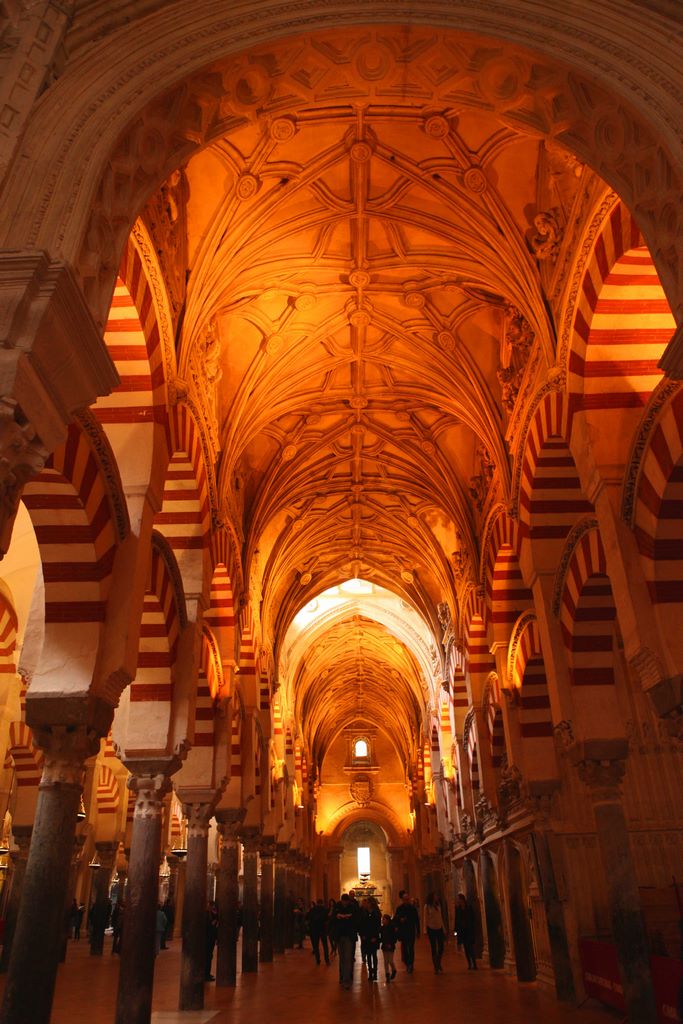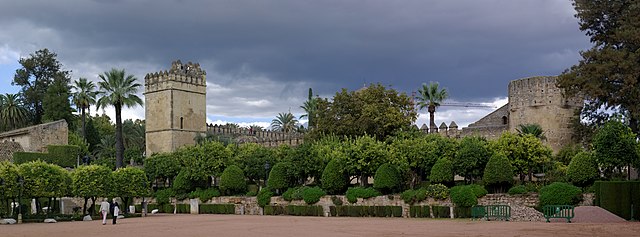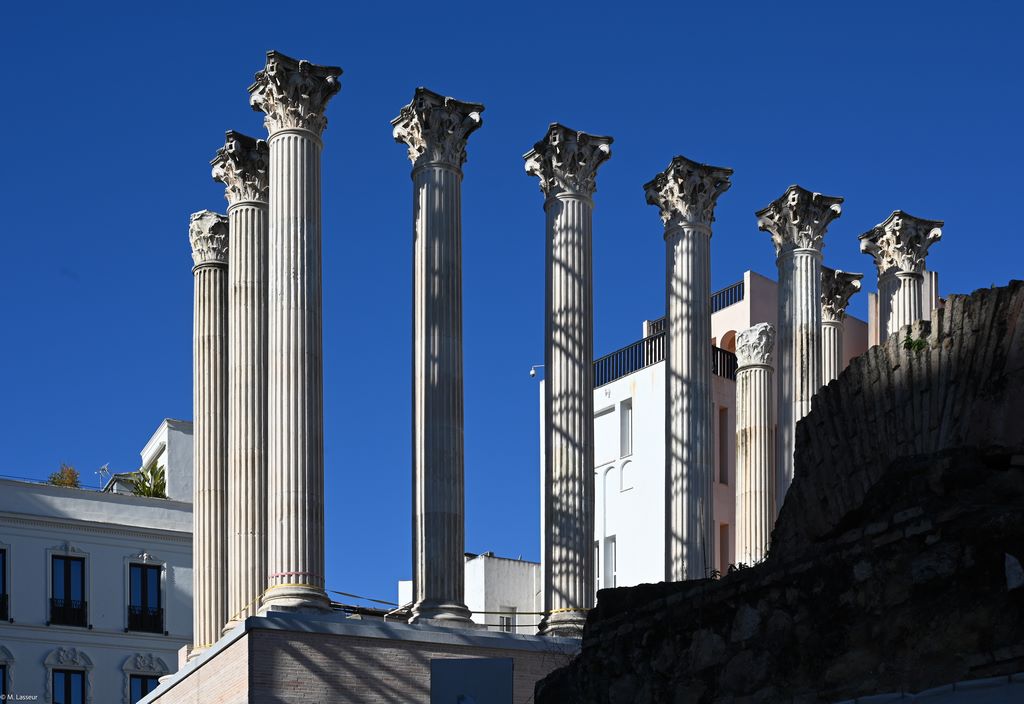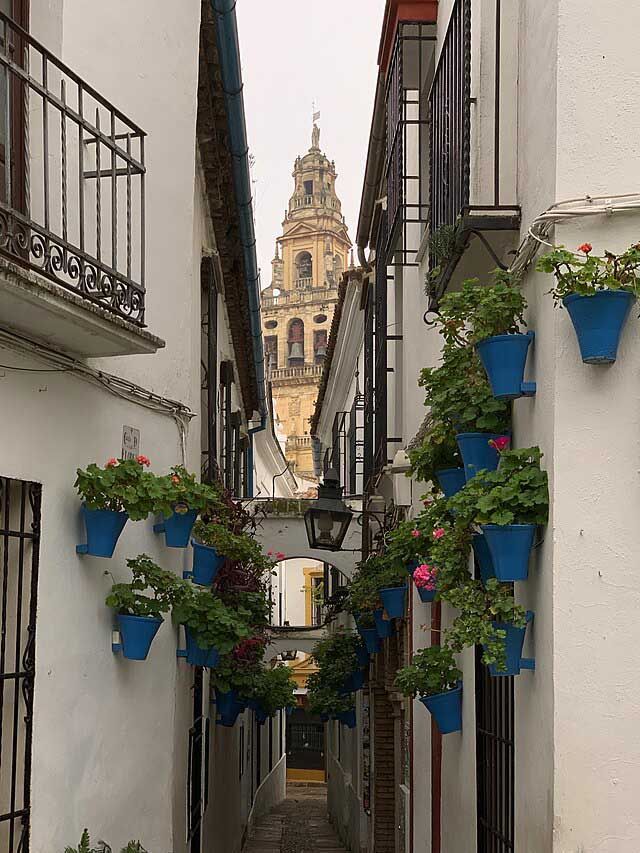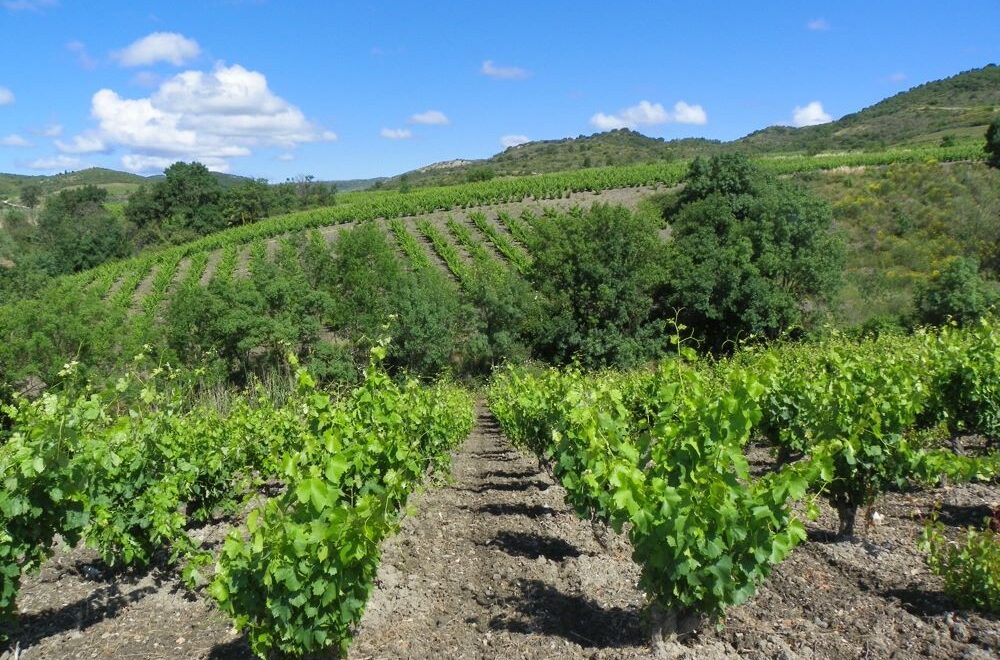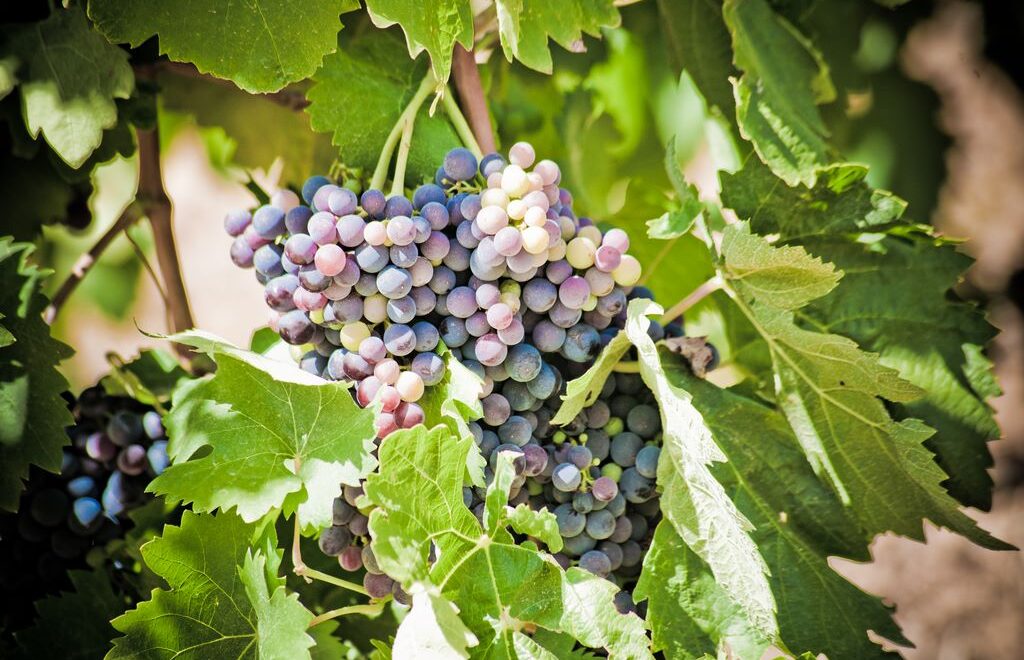
Cordoba is the second most attractive city in Andalusia after Seville. Over the centuries, it has blended Moorish, Jewish and Christian heritage. The narrow streets and squares resonate with the echoes of a tormented and glorious history. The largest city in Europe in the 10th century, Cordoba is home to four UNESCO World Heritage sites.
The Roman Bridge
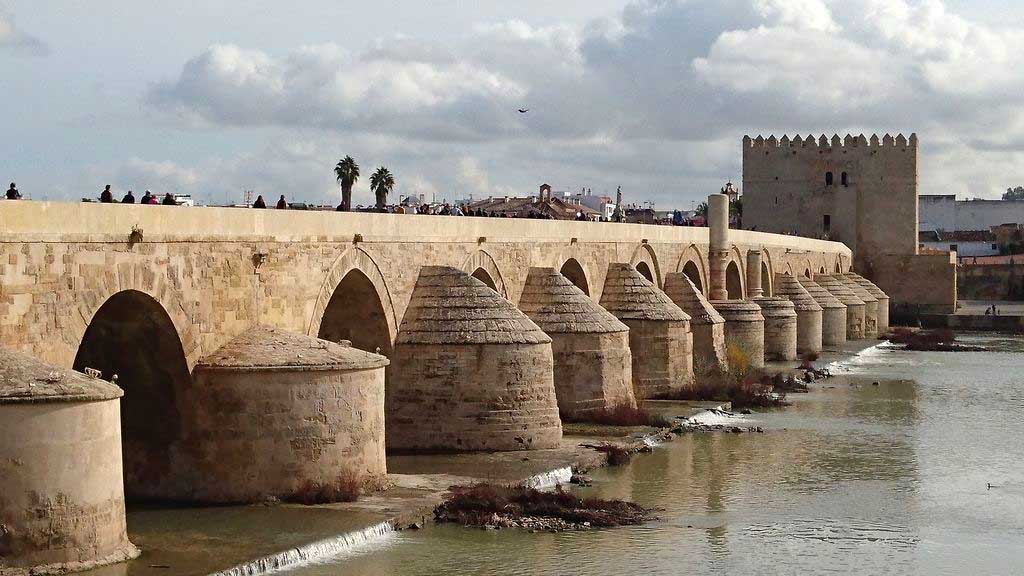
From the Roman Bridge, visitors can admire the majestic Mosque-Cathedral and the Albolafia water mills, reminders of the time when the river was a source of life and energy for the city. The Roman bridge, built in the 1st century BC during the reign of Augustus, is one of the oldest bridges in Spain still in use. Its length of 247 metres and its architecture make it a tourist attraction. It spans the River Baetis (now the Guadalquivir), navigable from Córdoba to the Atlantic Ocean. The bridge has undergone several restorations throughout its history. The main structure dates back to the Middle Ages, and the most recent restoration was carried out in 1876. It comprises sixteen arches, four of which are lancet arches and the others semicircular, resting on solid abutments with semi-cylindrical forebays. The centre features a 1651 sculpture of Saint Raphael by Bernabé Gómez del Río. The bridge reflects the city's Roman, Islamic and Christian heritage, each of which has left its mark.
One of the most pleasurable aspects of the Roman Bridge is the panoramic view it affords, on one side over the majestic Mosque-Cathedral of Córdoba, a UNESCO World Heritage Site since 1984, and on the other over the Calahorra Tower.
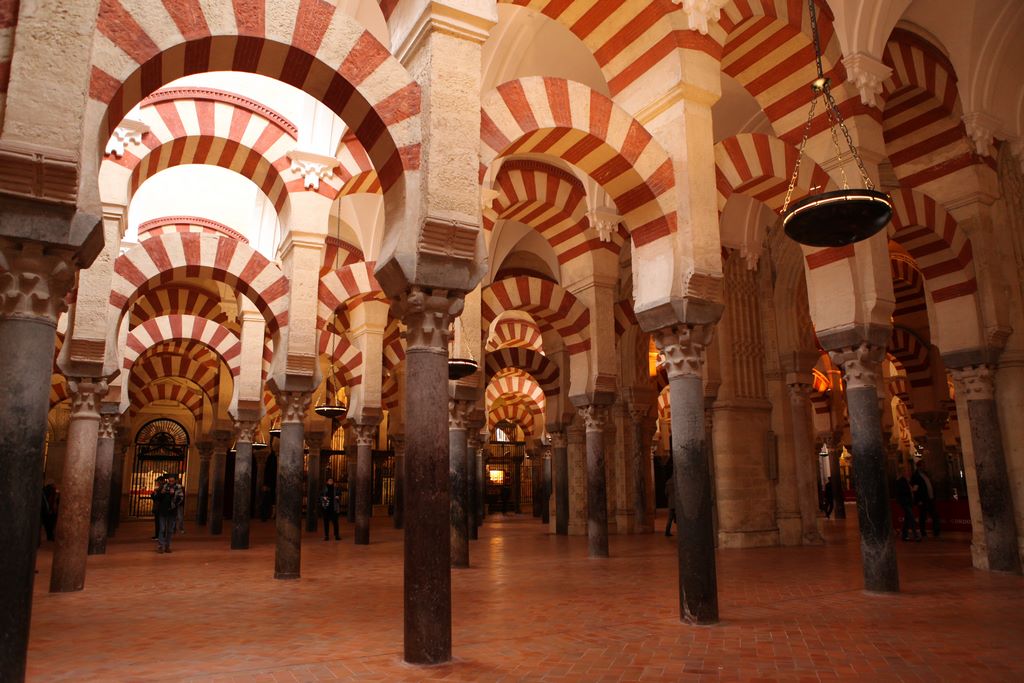
This unique perspective provides an insight into the strategic and economic importance of the bridge through the ages. The mosque built on the banks of the Guadalquivir near the Umayyad Alcázar, a major monument to the Muslim presence in Spain from the 8th to the 15th century, underwent successive extensions until the 10th century. Until the bishop, Alonso (or Alfonso) ManriqueIn 1523, he began building a Christian cathedral inside the mosque!
According to our guide, this Christian integration is like "a tall tree that hides a wonderful forest of arches and columns".. Visitors will marvel at the 23,400 m² of surface area and the 856 granite, jasper and marble columns supporting two levels of two-tone arcades. And... the Tower of the Mosque-Cathedral that we see today is breathtaking: it covers the minaret inside, which dates back to 952!


On the way to the old town, our guide makes the introductions. Here is the philosopher Seneca, frozen for eternity in bronze, at Almodovar's gate. And also the seated statue of the Jewish scholar and rabbi Maimonides (1138-1204), in the small square of Tiberias. It was here that Arabs, Berbers, Jews and Christians, descendants of the Romans, were enriched by their differences... As we run along, we discover palaces, terraces, orchards, gardens and fountains... Sol y sombra, the sun and the freshness!
The Alcazar, fortress-palace of the Catholic Monarchs

The highlight of the visit is the Alcazar of the Christian Kings. In 711, the Muslims seized Cordoba, taking over the fortress built by the Visigoths and giving it the name of "Alcazar of the Christian Kings". " al ksar " "which means "castle" in Arabic. You can admire the Mosaic Room, which houses Roman mosaics from the 2nd century discovered in Cordoba during various archaeological excavations, and, in one of the entrance galleries, a superb sarcophagus dating from the first quarter of the 3rd century.

The jewel in the Alcazar's crown is undoubtedly its gardens, designed in Moorish style and adorned with delicate fountains and rows of cypress and orange trees.

Ferdinand III of Castile (1201-1252) recaptured Córdoba from the Muslims in 1236. During the Reconquista, the Alcázar was divided between the, Order of Calatravathe bishop and the nobles. Alphonse X (1221-1284), son of Ferdinand III, had certain parts of the palace, devastated by the wars of succession to the Caliphate and looting, rebuilt with the aim of turning it into a royal residence. Alfonso XI le Justicier (1311-1350), son of the king Ferdinand IV (1285-1312), fortified the Alcázar between 1327 and 1329. He rebuilt the Alcázar as we see it today. La Reconquista of the Kingdom of Granada in 1492.
This is where the Catholic kings, Ferdinand II of Aragon (1452-1516) and Isabella of Castile (1451-1504), lived here for several years while planning the reconquest of the kingdom of Granada, which was then ruled by Muslim dynasties. The Christian kings met Christopher Columbus in this palace as he prepared to make his first voyage to the Americas. Once the Reconquest was complete, the Alcazar became the headquarters of the Spanish Inquisition, created at the request of the Catholic Monarchs to combat the numerous false conversions, until it was disused in 1821.
Roman temple
The remains and columns of this temple, located near Cordoba's Town Hall in the centre of a large arcaded square, show the splendour of ancient Cordoba. The temple stands on a high podium supported by Corinthian columns and was dedicated to imperial worship. Construction began during the reign of the emperor Claude (10-54) (Julio-Claudian dynasty), and was completed in the 1st century AD under the reign of Domitian (51-96). Visible from afar, its purpose was to impress travellers arriving on the via Augusta, the road leading into Cordoba.
The archaeologists uncovered a number of objects and inscriptions: fragments of statues, votive altars and decorative bas-reliefs that testify to the artistic wealth of the temple. The excavations also revealed traces of colourful frescoes and mosaics that adorned the walls and floors, adding a spectacular visual dimension to this place of worship.
The essence of Cordoba: Flower Alley
This beautiful "Calleja de las Floresin the heart of the Jewish quarter, reveals the soul of Cordoba, with its Arab, Berber, Jewish and Christian heritage. It is an alleyway that ends in a flower-filled square.

The district is full of flower-filled patios. Children play hide-and-seek among the flowerpots, while adults chat peacefully in the shade of the terraces. Here, the history and culture of Cordoba come together in a burst of colours and scents. Retracing our steps, we find ourselves once again facing the elegant tower of the Mosque-Cathedral.
Accommodation
AC CORDOBA Marriott
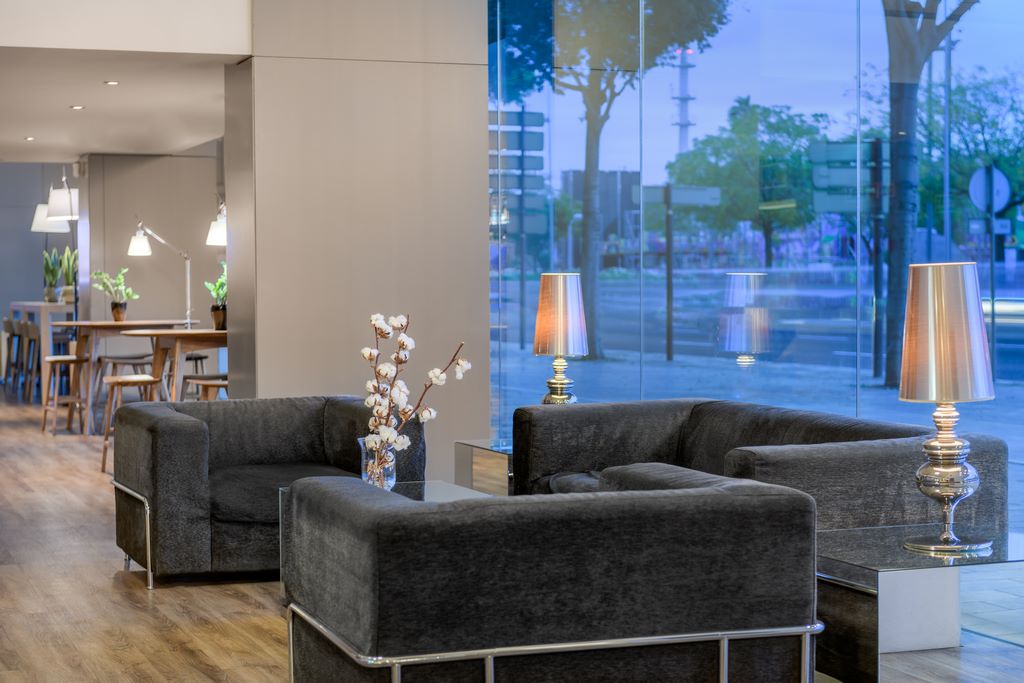
Excellent location, opposite the AVE train station, in one of the city's main business districts. Spacious rooms and sober decor: avant-garde style in public areas. Beautiful views of Córdoba from the all-glass restaurant on the ground floor. AC lounge, ideal for working, relaxing or simply reading. After a few minutes' drive, we reached the Mezquita, a symbol of the Muslim presence in Spain from the 8th to the 15th century.
Córdoba airport can be reached in 20 minutes by car, while the AVE bus and train stations are 100 metres away.
Marriott, the world's largest hotel chain, merged with Starwood hotels in 2016. When opening new properties, Marriott is fortunate to be able to leverage its Mariott Bonvoy loyalty programme, which has 177 million members.
AC HOTEL CORDOBA BY MARRIOTT
Avenida de la Libertad, 24
Cordoba
What to see
The Cordoba feria in May celebrates Andalusian traditions with passion and flair. For a week, the streets and squares of the city are transformed into a huge theatre of festivities, where music, dance and gastronomy come together. Locals and visitors alike gather under colourful marquees to savour tapas, sample local wines and dance to the rhythm of flamenco into the night. Horse parades, bullfights and open-air concerts add to the charm of this festival, which embodies the friendly, festive spirit of Cordoba. The feria is a true tribute to the city's cultural heritage and the joie de vivre of its people, marking a memorable end to spring in this city with a rich historical past.
Text : Michèle Lasseur
Photos : Michèle Lasseur and


